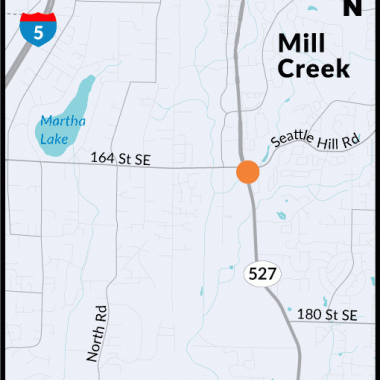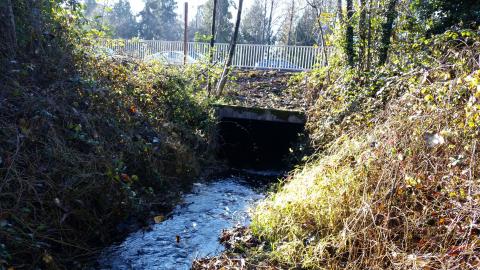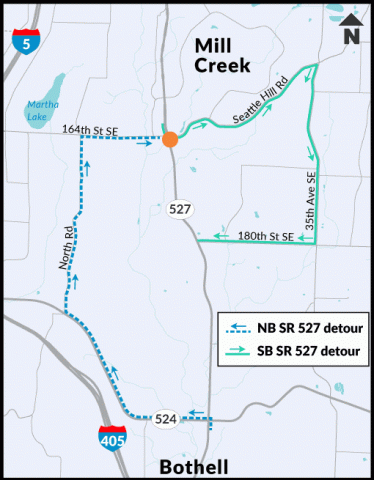Penny Creek crosses under SR 527 just south of the intersection with 164th Street Southeast in Mill Creek. The creek is funneled through a culvert that is just 9 feet wide by 4 feet tall. Over the years, multiple problems have developed that make this culvert a barrier to fish.
Erosion has resulted in a drop off that make the culvert too high for fish to successfully jump up. The culvert is too narrow, causing water to flow faster than fish can successfully swim up. Finally, old log weirs were added to the stream. A weir is a structure built across a water channel to change the water flow. In this case, the weirs are now too high for fish to successfully jump.
When replacing fish barriers, we must build structures and improve the stream so that fish can use it year-round at all stages of their life. That means during summer months when streams are usually lower, the stream must be usable by juveniles and adults. During winter, when water tends to run higher and faster, the stream must also have areas where fish can rest.
New fish passable structure
To replace the existing culvert, WSDOT will build a new structure that is 26 feet wide and 10 feet tall. We'll also add woody vegetation, logs and other wood to this section of Penny Creek to provide channel complexity and diversity, such as pools which provide refuge for young fish. These habitat elements enhance rearing and spawning habitat for fish. The improvements mean fish will have access to 8.36 miles of habitat that was previously inaccessible. In addition, there is 9.71 acres of rearing habitat where young fish live, grown and mature and another .86 acres of spawning habitat for adult fish.
Fish in Penny Creek
Penny Creek is home to a wide variety of fish at different times of the year.
- Coastal cutthroat trout - year round
- Steelhead/Rainbow trout - November through June
- Sockeye - May through December
- Chinook - July through December
- Coho - August through December
WSDOT’s role in fish recovery
In coordination with the state’s fish recovery efforts, WSDOT is building hundreds of fish-passable structures under highways throughout western Washington. This project just south of 164th Street Southeast in Mill Creek will help fish travel upstream to good quality spawning and rearing habitat.
The total estimated project cost is $8 million, using state funding.



